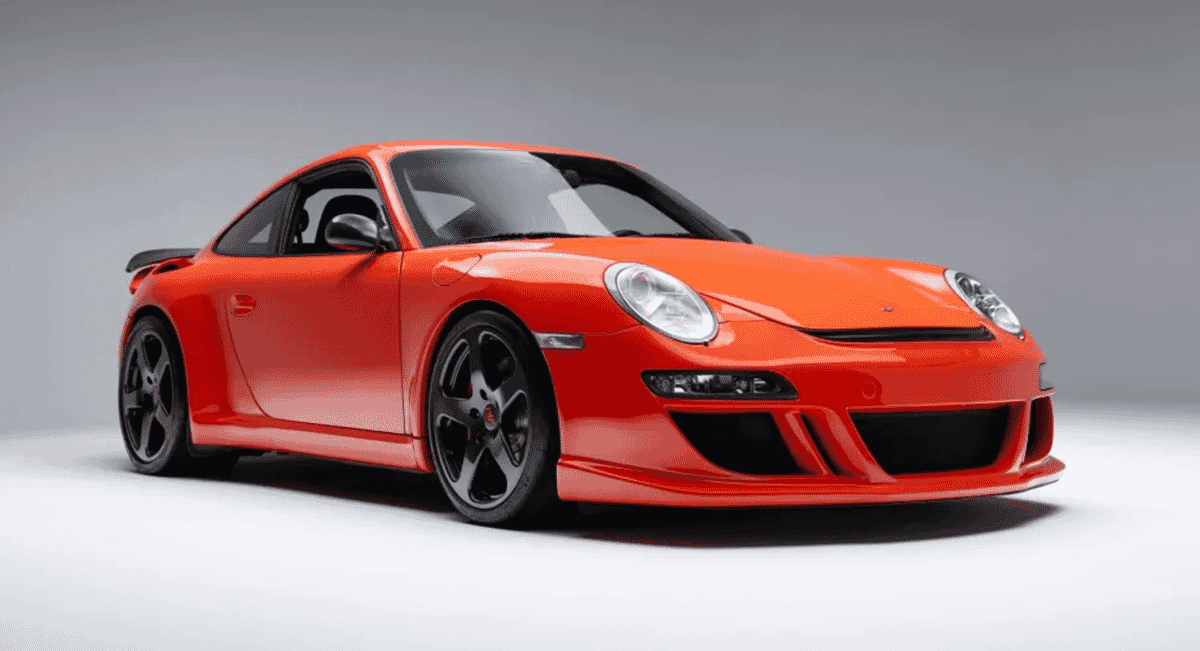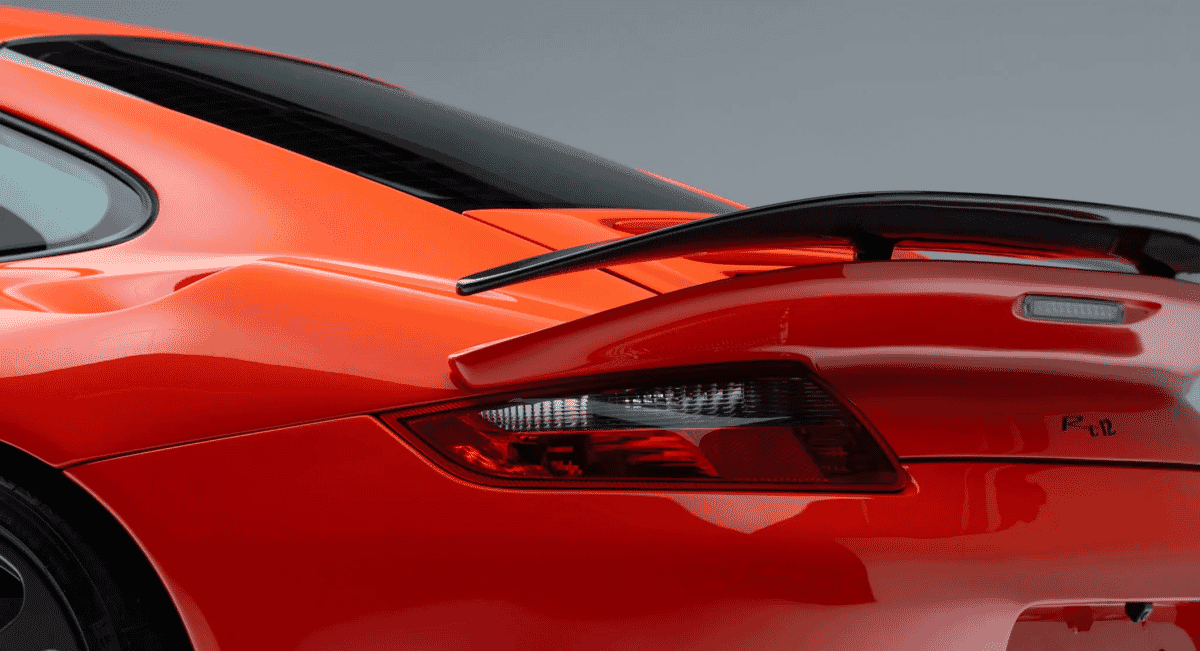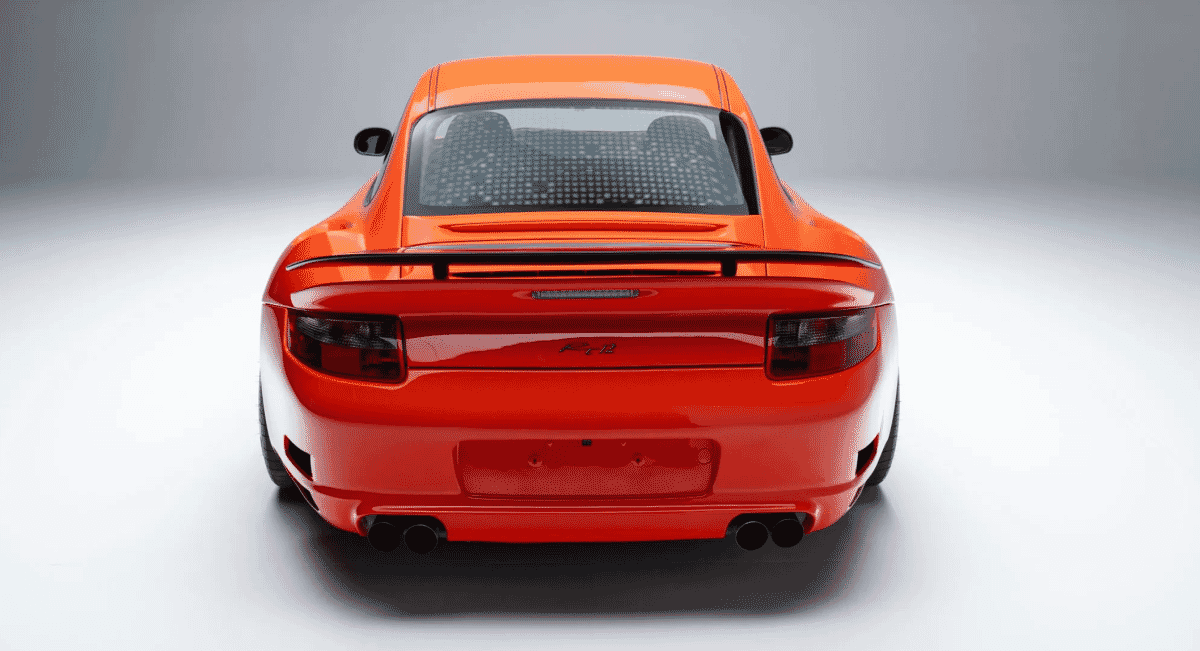The 2005 RUF Rt12 is not a car, it’s a mission statement – a highly specific, slightly terrifying one – from a tiny Bavarian outfit obsessed with improving the unimprovable. Based on the 997-generation Porsche 911, the Rt12 was RUF’s first swing at that platform, and like most things from Pfaffenhausen, it’s less a tuner special and more a complete philosophical reworking of the idea of a 911. Blood Orange suits it.
This particular example – one of just 13 said to exist – has travelled more than most: from Texas to Japan, on to British Columbia, and now up for sale again in Illinois. Beneath the lurid paintwork lies a hand-rebuilt 3.8-litre flat-six fitted with twin KKK turbos, breathing through a bespoke intake manifold and pushing out a very healthy 650 horsepower. It’s connected to all four wheels via a six-speed manual and a limited-slip differential, meaning it’ll launch like a missile and hold the road with grim determination.

The exterior is a tasteful apocalypse. Revised valances, widened arches with integrated intakes, and a retractable rear wing give it that familiar RUF silhouette – one foot in the world of motorsport, the other in a Swiss bank vault. It rides on dark grey 19-inch RUF alloys and Öhlins coilovers with a hydraulically actuated dual-height system, which feels like overkill until you approach a speed bump with £300k’s worth of heritage under your seat.

Ruf Rt12: It's what's inside that counts
Inside, it’s part luxury coupe, part rolling test bench. Black leather buckets, orange stitching, and a body-colour dash set the tone, while the roll cage quietly suggests you’re not just here to pose. There’s no rear bench, of course. Just a three-spoke RUF wheel, drilled pedals, and instrumentation that measures in kilometres per hour, like all good European rockets should.

The Rt12 is that rare thing: a car with presence that isn’t performative, speed that isn’t synthetic, and heritage that doesn’t rely on badges alone. It won’t coddle you. It will, however, reward commitment with violence. RUF’s own literature once referred to it as “the daily drivable supercar.” Only in Germany would such a phrase sound plausible – and, somehow, accurate.
Next up: Why you'll need a cool million for this 1990 Porsche 911.




